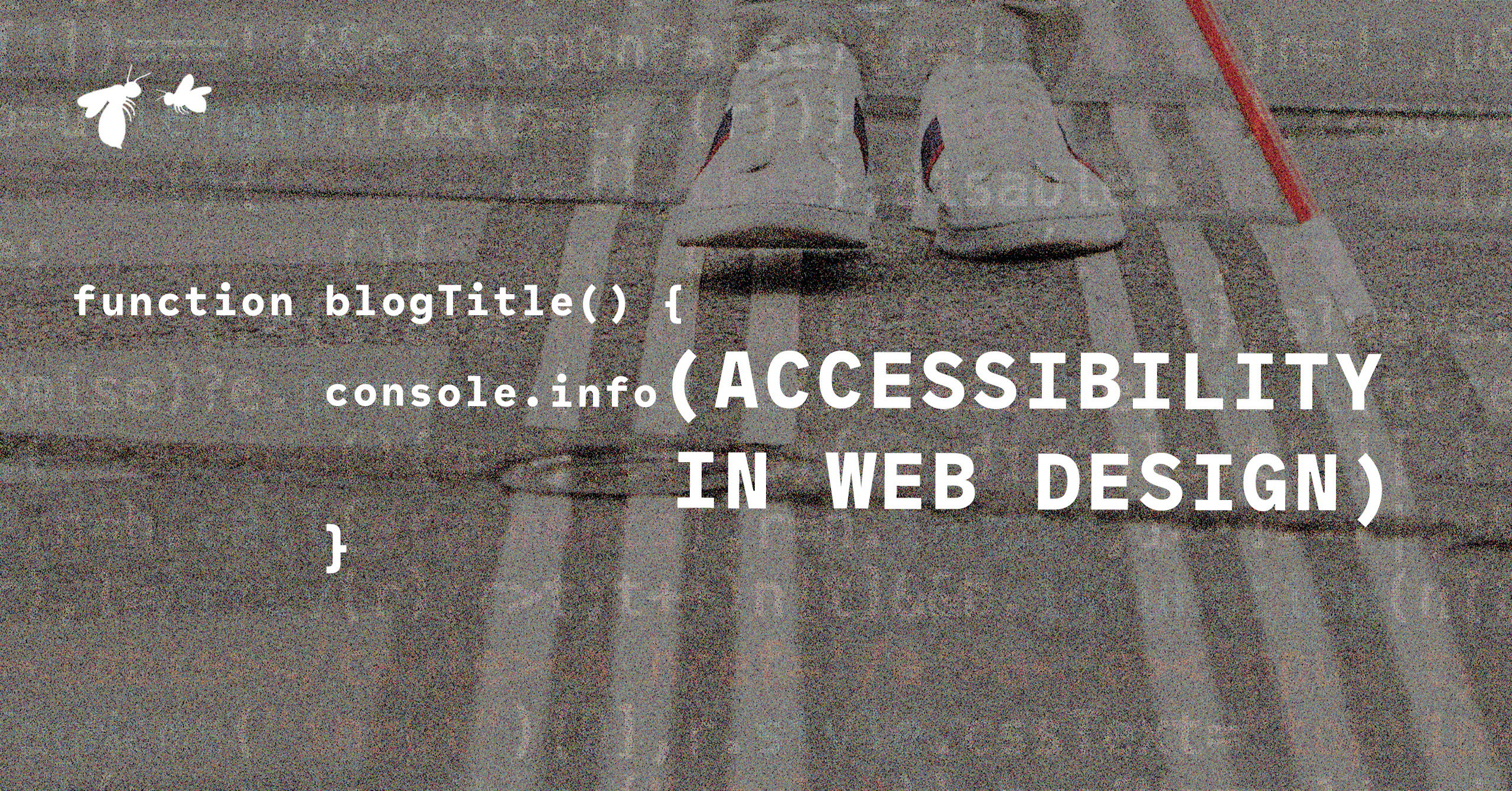Accessibility in Web Design

In the physical world, accessibility design can be seen everywhere. In the virtual web world, it’s comparatively new—but the field is well on its way to inclusion.
Have you ever tried closing your eyes while navigating a website? Just the thought alone helps you understand how people with visual disabilities complete a simple task, such as placing an online order during quarantine. Simply turn on the screen reader to experience it yourself.



The Limitations of Inaccessible Web Design
This is only a small aspect of accessibility design online, and one I hadn’t even considered until I attended a speaking engagement by a young girl with a vision disability. She, like many, was pursuing a romantic relationship, wanting to date and meet more people. And like many, she wanted to try a dating app to do so. However, she became increasingly frustrated with the app as it strongly relies on photos that she is not able to see. Because of the lack of narrative descriptions for the photos, she had no way of knowing what any potential dates looked like—and she’s not alone.
There are many people in the same situation as her, and there are even more difficulties they deal with in this digital world. That speech became a precious lesson for me, allowing me to empathize closely with the speaker and others like her. I was touched, and I realized that with a bit more effort in our web designs and development, we could make big difference in someone’s life.
The Growing Importance of Accessibility Design
There are many types of disabilities, and with so many diverse users, they may encounter different difficulties on the web. The statistics show that one in five people have a disability and about 8.5 million people have a disability that affects technology use. In addition, the world is aging. The US Census Bureau estimates that by 2030, one in five Americans will be over the age of 65—and by 2060, 98 million people will have been born in 1995 or before. Soon, aging users are going to be impossible to ignore.
The web must be accessible to provide equal access and equal opportunity to people with diverse abilities. Indeed, the UN Convention on the Rights of Persons with Disabilities recognizes access to information and communications technologies, including the web, as a basic human right.
So, how can information and communication services be made usable for every person? For starters, the World Wide Web Consortium (W3C) has developed Web Content Accessibility Guidelines (WCAG) with the goal of providing a single shared standard for web content accessibility that meets the needs of individuals, organizations and governments internationally.
To help our sites serve more of the population with better user experience, we use these guidelines to include accessibility design in our web development process. At BatesMeron, that process includes:
- Providing text alternatives for non-text content
- Providing captions and alternatives for audio and video content
- Making content adaptable and making it available to assistive technologies
- Using sufficient contrast to make things easy to see and hear
- Not relying on color alone for information
- Writing text that is readable and understandable
- Using HTML tags that descend logically (NOT using them simply for decoration)
- Using the appropriate font size for the target user group
The End of Excuses
In addition to making our sites more inclusive and equitable, improved web accessibility actually provides better support for site SEO and has a better mobile performance. That means there’s simply no excuse for inaccessible designs that hurt your site performance and exclude users.
Repeat with me: Our website has data and functions that incorporate accessibility design principles and excludes no one because we care about everyone. If that doesn’t ring true for your website, you know who to call.
All Hail the Creative Brief
Consistent Branding: Keeping the Sales vs Marketing Peace
6 Reasons I Got My WBE Certification








